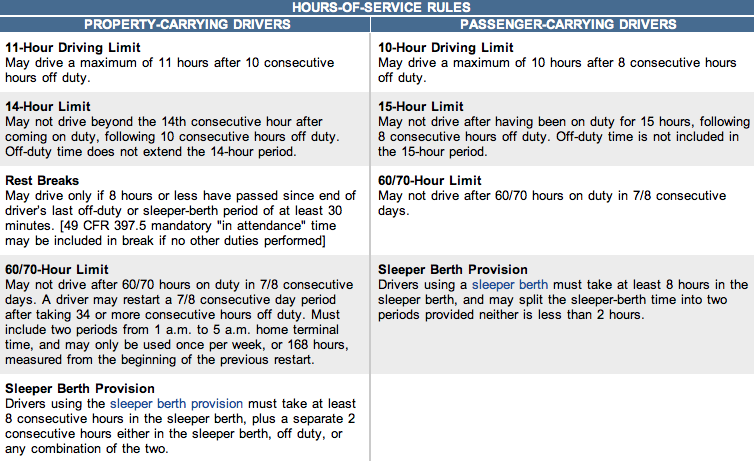Did you hear? The U.S. Department of Transportation’s Federal Motor Carrier Safety Administration (FMCSA) set new federal regulations designed to improve safety for the motoring public by reducing truck driver fatigue.
Before July 1, drivers could end their week, spend 34 hours off duty and start a new week. Under regulations that took effect July 1, however, they may have to wait much longer, depending on when they go off duty.
The new hours of service rules require two back-to-back 1 a.m. to 5 a.m. periods within the 34-hour “restart” period. That means drivers must end their week within a 6-hour window between 7 p.m. and 1 a.m. if they want a true 34-hour restart.
The new rules will make it tougher for drivers to get back on the road after 34 hours of rest. Carriers will have a bit harder time scheduling drivers and efficiently routing trucks.

Working long daily and weekly hours on a continuing basis is associated with chronic fatigue, a high risk of crashes, and a number of serious chronic health conditions in drivers. It is estimated that these new safety regulations will save 19 lives and prevent approximately 1,400 crashes and 560 injuries each year.
FMCSA’s new hours-of-service final rule:
- Limits the maximum average work week for truck drivers to 70 hours, a decrease from the current maximum of 82 hours;
- Allows truck drivers who reach the maximum 70 hours of driving within a week to resume if they rest for 34 consecutive hours, including at least two nights when their body clock demands sleep the most – from 1-5 a.m., and;
- Requires truck drivers to take a 30-minute break during the first eight hours of a shift.
The final rule retains the current 11-hour daily driving limit and 14-hour work day.

What’s your opinion on the new hours of service? Visit our Facebook page tell us your thoughts!